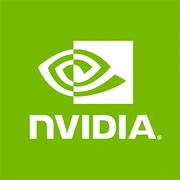NVIDIA GeForce RTX 2060 Mobile

NVIDIA GeForce RTX 2060 Mobile in 2025: Everything You Need to Know
A professional analysis of the laptop graphics card — from architecture to practical tips.
1. Architecture and Key Features
Turing Architecture: The Foundation of Technological Breakthroughs
The GeForce RTX 2060 Mobile graphics card is built on NVIDIA's Turing architecture, introduced in 2018. Despite its age, this architecture remains relevant due to its support for key technologies:
- RT Cores — hardware blocks for ray tracing that provide realistic lighting and reflections.
- Tensor Cores — cores for artificial intelligence tasks, including the DLSS (Deep Learning Super Sampling) technology.
Manufacturing Process and Unique Features
The chips are manufactured using a 12nm process, which may seem modest in 2025 compared to the 5nm and 6nm solutions. However, driver and software optimization allow the RTX 2060 Mobile to remain competitive.
- DLSS 2.0+ — boosts FPS in games through AI upscaling. For example, in Cyberpunk 2077, enabling DLSS provides an increase of up to 40%.
- Support for FidelityFX Super Resolution (FSR) — compatibility with AMD technology offers an alternative for games not using DLSS.
2. Memory: Performance and Impact on Gaming
GDDR6: The Balance of Speed and Energy Efficiency
The RTX 2060 Mobile features 6GB of GDDR6 memory with a 192-bit bus. The bandwidth is 336 GB/s (14 Gbps × 192 bits / 8). This is sufficient for most games at 1080p, but there may be limitations at 1440p or 4K, especially in projects with high-resolution textures (Horizon Forbidden West, Starfield).
Practical Considerations
- 6GB is the minimum comfort level in 2025. For instance, in Call of Duty: Modern Warfare V with ultra settings at 1080p, video memory usage reaches 5.5–5.8GB.
3. Gaming Performance: Numbers and Resolutions
1080p: Comfort Zone
- Cyberpunk 2077: Medium settings + DLSS Quality — 55–60 FPS. With ray tracing (RT Medium) — 45 FPS (DLSS is essential).
- Apex Legends: High settings — stable 90–100 FPS.
1440p: Gaming with Caveats
- Elden Ring: High settings — 45–50 FPS (without Ray Tracing). With DLSS — up to 60 FPS.
- 4K is not for the RTX 2060 Mobile. Only in less demanding titles like CS:GO or Dota 2 can you achieve 60 FPS on medium settings.
Ray Tracing: Beauty Comes at a Cost
Activating ray tracing reduces FPS by 30–40%. For example, in Control with RT Medium and DLSS Performance mode, it gives 50–55 FPS at 1080p.
4. Professional Tasks: Not Just Gaming
Video Editing and 3D Rendering
- Premiere Pro: Rendering 4K videos with effects is accelerated by CUDA cores. Exporting a 10-minute clip takes about 8–10 minutes.
- Blender: Rendering a medium-sized scene (BMW Benchmark) takes about 15 minutes.
Scientific Calculations
Support for CUDA and OpenCL allows the card to be used for machine learning (basic TensorFlow/PyTorch models) and physical simulations. However, the 6GB memory limits work with large datasets.
5. Power Consumption and Heat Generation
TDP and Cooling Requirements
- The card's TDP is 80–90W. In laptops with poor cooling systems, throttling may occur under load.
- Recommendations:
- Choose models with two fans and copper heat pipes (such as ASUS ROG Zephyrus or Lenovo Legion).
- Use cooling pads to lower temperatures by 5–7°C.
6. Comparison with Competitors
AMD Radeon RX 5600M
- Pros: 10-15% cheaper, performs better in Vulkan projects (Red Dead Redemption 2).
- Cons: No hardware ray tracing, FSR is inferior to DLSS in image quality.
NVIDIA RTX 3050 Mobile
- Newer but weaker in RT tasks. 4GB of memory is critical for modern games.
Conclusion: The RTX 2060 Mobile in 2025 beats budget newcomers due to DLSS and 6GB of memory.
7. Practical Tips
Power Supply and Compatibility
- The minimum power supply for the laptop is 150W. For models with Intel Core i7/i9 or Ryzen 7 processors — 180–200W.
- Check the ports: HDMI 2.0b and DisplayPort 1.4 support 4K@60Hz.
Drivers and Optimization
- Regularly update drivers via GeForce Experience. In 2025, NVIDIA continues to release patches for Turing.
- For professional tasks, install Studio Drivers — they are more stable for working with editors.
8. Pros and Cons
Advantages:
- Supports DLSS and ray tracing.
- Optimal performance at 1080p.
- Affordable price (laptops starting from $600).
Disadvantages:
- 6GB of memory is insufficient for 1440p and above in 2025.
- High heat output in thin chassis.
9. Final Conclusion: Who is the RTX 2060 Mobile Suitable For?
This graphics card is an ideal choice for:
- Gamers on a budget of up to $700 looking to play at 1080p with high/medium settings.
- Students and freelancers who need mobility and CUDA support for work in Blender or Premiere.
- Ray tracing enthusiasts who are willing to compromise on FPS for beautiful visuals.
Alternative: If your budget exceeds $800, consider laptops with the RTX 3060 Mobile (8GB GDDR6) — they are more future-proof against rising system requirements.
Conclusion
The NVIDIA GeForce RTX 2060 Mobile in 2025 is a “workhorse” for those who value the balance between price and performance. It has proven that even aging hardware can remain relevant through smart optimization and support for key technologies.
Basic
Memory Specifications
Theoretical Performance
Miscellaneous
Benchmarks
Compared to Other GPU
Share in social media
Or Link To Us
<a href="https://cputronic.com/gpu/nvidia-geforce-rtx-2060-mobile" target="_blank">NVIDIA GeForce RTX 2060 Mobile</a>